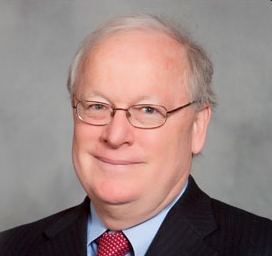Photo credit: Getty/Veerachart

In traveling around the United States to deliver keynotes, facilitate healthcare board retreats and consult with integrated delivery systems, I have encountered American physicians who believe that the Affordable Care Act has created unique challenges for them.
But a Canadian dispute between physicians and the Ontario provincial government reminds us that physician anxiety is not just an American phenomenon; confronting high-cost, inappropriate testing and treatment, new digital technologies and increasing patient empowerment creates tensions no matter where it occurs.
Last month, 63 percent of Ontario Medical Association members voted to reject a fee agreement with the Ontario provincial government, “creating a situation of ‘complete uncertainty’ and prolonging an internal battle within the medical profession,” according to the National Post. The rejected deal included a 2.5 percent physician pay increase and $370 million over a four-year period for physicians to co-manage cost reductions.
Newspaper accounts report that the dispute has revealed divisions within the Ontario physician community that sound familiar to anyone who has spent time recently listening to the concerns of American physicians. Supporters of the rejected contract offer include the CEOs from the province’s research hospitals, the Association of Family Health Teams, the Ontario Medical Students Association and the progressive Canadian Doctors for Medicare. Opponents who successfully lobbied to reject the proposed contract include the Ontario Association of Radiologists, Eye Physicians and Surgeons of Ontario and the cardiology groups.
Supporters of the Yes campaign made the following points:
- The contract put an end to the unilateral cuts previously enacted by the Liberal government
- The contract would give doctors more power to co-manage the system
- The contract provided for stability going forward
- The Ontario Medical Association negotiated the best deal possible and rejection will ultimately mean the physicians will get a worse deal
Supporters of the No campaign disagreed with this analysis and stated that:
- The Ontario Medical Association did not seek enough consultation with its members before negotiating the deal
- The radiologists went to court and forced a general meeting for the first time in 25 years and succeeded in obtaining the Ontario Medical Association membership list so they could lobby for a no vote
- The contract would make permanent the unilateral cuts the government had already made
- There should be binding arbitration between the government and the doctors
When healthcare systems anywhere in the world attempt to address fundamental problems by changing the way physicians are paid, problems arise. In the United States, the MACRA legislation attempts to use a new physician payment system to transition from a fee-for-service to a value-based payment system. A recent Hospital Impact post has documented the anxiety and confusion among physicians that this change has caused.
The recent Canadian experience that has pitted doctor against doctor, primary care clinicians versus specialists, and liberals versus conservatives, reveals that such changes are difficult and result in perceived winners and losers. While it is clear that the traditional ways physicians have been paid contribute to the very real problems facing anyone attempting to confront unsustainable costs and inadequate quality of care, coming up with acceptable solutions can be nearly impossible.
Upton Sinclair perhaps summarized our dilemma best when he wrote: “It is difficult to get a man to understand something, when his salary depends on his not understanding it.”
Kent Bottles, M.D., is a lecturer at the Thomas Jefferson University School of Population Health and chief medical officer of PYA Analytics.